If you’re installing a new toilet or replacing an old one, you may encounter a problem if the toilet flange (the toilet part connecting to the drainpipe on the floor) is too high.
This can cause the toilet to sit improperly on the floor and potentially lead to leaks and damage.
An unstable, wobbly base can result from a toilet flange that is too high. In order to solve this problem, you will need to cut some of the flange’s height off.
The toilet may not sit properly on the floor, and the bolts that hold it in place may not be long enough to reach the flange.
Here are some options for addressing a toilet flange that is too high:
Use a toilet flange extender: These are metal or plastic rings that fit over the existing flange and extend it up to the proper height. They can be secured with screws or adhesive.
Install a new toilet flange: If the existing flange is damaged or in poor condition, you may need to remove it and install a new one. This will require cutting the old flange out of the floor and installing a new one at the proper height.
Adjust the toilet: In some cases, you may be able to shim the toilet to make it sit properly on the floor. This can be done by placing small pieces of wood or plastic under the toilet’s base to raise it to the correct height.
It’s important to ensure that the toilet is properly installed, as an improperly installed toilet can leak and cause damage to the floor and surrounding areas.
Call a professional plumber to handle the repair if you’re uncomfortable working with plumbing.
Easy Fixes for a Toilet Flange That’s Too High
It’s common for toilets to sit unevenly on the floor when the toilet flange is too high. As a result, it wobbles or rocks back and forth, causing leaks.
There is even a possibility that it will warp the floor beneath it. If leaks continue to occur, there is a possibility that warping of the subfloor will occur, requiring extensive repairs. In this case, the only solution is to fix the toilet flange when it’s too high.
What To Do if Your Toilet Flange Is Too High? [Explained In Detail]
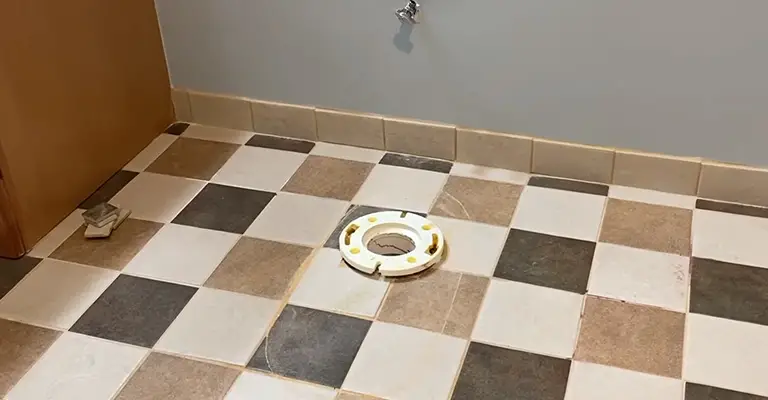
When you notice problems with the height of your toilet flange, you should act immediately. Besides being uncomfortable and problematic, this situation can damage your bathroom in a long-term, hard-to-repair manner.
You need to ensure that the toilet’s entire base lies flat on the floor if the flange sits too high. By doing so, back-and-forth rocking motions and leaks can be prevented.
Height can be increased by adding to the floor or shortening the pipe and replacing the flange.
It’s a good idea to consult a professional if you’re unsure what to do. You may end up paying a lot of money for costly repairs when dealing with plumbing-related problems.
The next step is to examine how you can fix this problem properly, as well as guidance on which options are best for you.
1. Raising the Floor

If you’d like to fix the issue aesthetically, you might want to raise the floor so that the toilet base is on the ground. An undertaking of this nature will require considerable energy and time.
It would be better to look at thicker flooring options that can add height if it is still the best alternative for you.
To raise the floor:
- To determine the space between the floor and the top of the flange, measure the height of the flange.
- When you multiply this measurement by the height of the old floor, you will get the exact thickness of the new floor.
- Take out the toilet and any other fixtures you have installed in the bathroom.
- It is necessary to remove the old flooring.
Your toilet should be completely level by the end of the renovation, depending on your skill and experience level. Install the new flooring (this process may take days, depending on your skill and experience level).
There needs to be a minimum distance between the top flange and the bathroom floor for this solution to work. There will be a significant gap between the tiles and the project, so you’re unlikely to find tiles high enough.
It can usually be worth replacing your bathroom floors if you have planned to remodel the space anyway. There is no doubt that this is a costly, labor-intensive solution, but it is virtually guaranteed to last for decades.
It’s much easier and quicker to fix your toilet’s flange if you’re not ready to spend that kind of money or just want a quick fix.
2. Fill the Gap
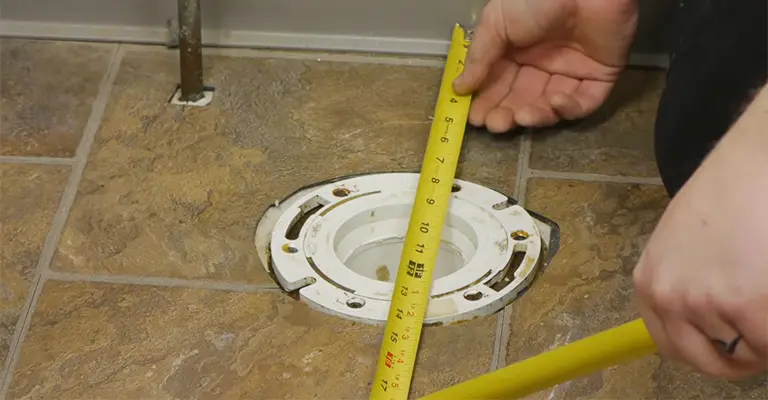
First, this is frequently the cheapest and easiest option; however, it may not be as aesthetically pleasing as the other two options.
The amount and weight of the material you add will determine whether you place wooden boards beneath the tile. As a result, you will not only gain added support, but you will also be able to increase your height more effectively.
Using Plywood
My first recommendation would be to try plywood for floor construction. This can be done by:
- You need to measure the circumference and height of each piece of plywood you are using.
- Make a copy of the dimensions and trace them onto the material.
- Depending on the shape and size you desire, cut the plywood.
- Make sure you have enough plywood pieces to complete the project.
- It is important to ensure that each piece of plywood fits snugly against the toilet flange.
- Ensure that everything is level before proceeding.
- Put glue or screws on the plywood pieces to secure them.
- On top of the plywood, place the toilet bowl.
- Check to see if everything is level again.
As soon as you’ve finished this process, the toilet should sit securely on the plywood. Any leaks from the past have likely been resolved.
To achieve levels, you will need to remove the toilet and re-do the process if you continue to notice leaks.
It’s important to remember that if your bathroom leaks, the plywood could warp or soften, requiring replacement.
Keeping your toilet secure while you perform long-term repairs isn’t a permanent solution, but it can help keep it from falling apart.
Using Grout
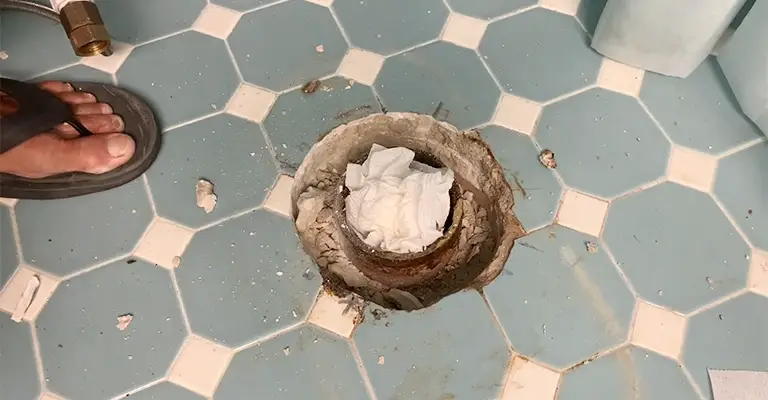
Grout can fill the gap if you choose the second option. It is one of the most popular choices for the job since grout is durable, inexpensive, and easy to handle. If your toilet flange is too high, you can use grout to fix it:
- As instructed on the package, mix the grout with water until a paste is formed.
- Apply the grout after setting the toilet in place.
- Shim the toilet as much as possible to make sure it is level.
- You can apply grout paste around the toilet base but avoid the shim areas.
- It is important to wait 24 hours for the grout to dry completely.
- Ensure the supporting shims are removed (this may require some effort).
- Use grout to fill the spaces left by the shims.
- Once again, let it dry for 24 hours.
- Install the nuts and tighten them on the toilet.
- Ensure that everything is level before proceeding.
As long as the grout is applied and dried correctly, it can last very long, compared to plywood.
This method has some drawbacks, but it is more cost-effective and requires less effort than replacing the flange altogether and adding new flooring.
Using Cement
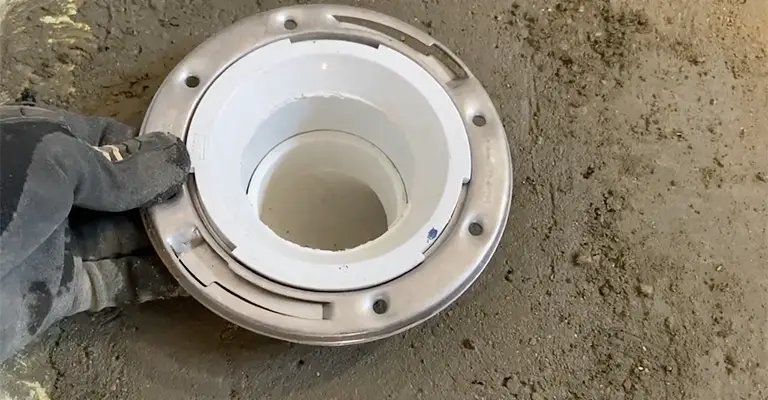
Finally, you can fill the gap with cement as a last resort. When there is only a small gap, this solution is ideal.
It might be possible to solve the problem quickly and easily by using tile on cement in a situation like this. If your toilet flange is too high, you can fill the gap between the floor and the toilet with cement:
- Measuring the gap’s height and the base’s circumference will determine how many cement boards you need (the height of the gap is the determining factor).
- Four cement boards should be put together, and the circumference plus one inch should be measured right in the middle.
- Spread the cement evenly with a flooring trowel.
- Wet the cement and place the boards over it.
- Using screws, fix the boards together.
- Utilize high-quality tile glue to glue the tiles to the boards.
- By tightening the nuts, the back of the toilet will be secure.
- Make sure everything is level before proceeding.
When toilet flanges are significantly higher than the floor, cement may not be the best option.
Using cement to fill in large gaps between the flange and the floor is not recommended. As an alternative, you can raise the floor or replace the flange entirely, which we will discuss later.
Taking on an expensive and time-consuming project is out of the question for homeowners with limited experience.
If you plan on moving on to the following options, please try one of these projects first, as their results would be more than worth your time.
3. Replacing the Flange
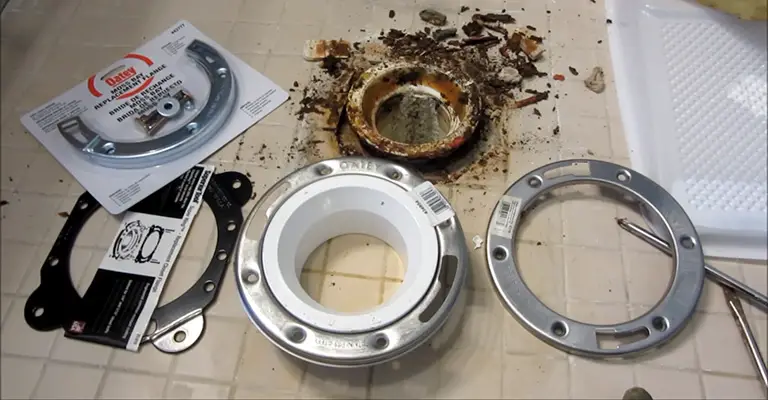
The other alternative would be to shorten the pipe and replace the entire flange if neither of these options sounds appealing to you.
This option is recommended to be considered the last option, given the possibility of irreversible damage to the tube.
Aside from being time-consuming and tiring, this process is more time-consuming and complicated than the others described.
If none of the other options are possible, consider replacing the flange only if no other options are available. Consequently, be careful when using the tools and pay close attention throughout the process.
Flanges are usually placed too high because pipes extend far beyond their required length and go above the floor, which is often the cause of too-high flanges.
A simple cable saw is more than sufficient to remove these types of pipes because they are usually PVC. It is necessary to remove the toilet from the area before beginning.
Here’s how to replace the flange:
- Be sure to clean around the flange, removing any debris that might interfere with the installation.
- It is recommended that you stuff some type of cloth or paper into the flange to protect it from falling down the pipe or inhaling dangerous fumes.
- Remove the outer portion of the flange by using a hammer and chisel or a variable-speed drill. Be careful not to damage the pipe (take out small portions of the flange at once).
- Make sure you do not cause the pipe to crack as you remove the inside portion of the flange.
- Reduce the length of the pipe by grinding it until it’s completely level.
- Prevent a mismatch by placing the new flange after carefully measuring the height (look for models with water-tight seals and decent depths).
- The replacement should be anchored into the floor by drilling holes.
- Ensure that the toilet is securely mounted on the flange.
- If you do this method, you’ll have a level toilet that doesn’t cause any unnecessary movements or leaks.
Additionally, this permanent solution does not require you to repeat it over time. Considering its complexity, you’d better hire a professional to guide you through this process, as any mistakes can lead to costly repairs.
The first three filling options should be tried before raising the floor, shortening the pipe, and replacing the flange.
This type of installation is inexpensive, quick, and more suitable for the typical homeowner to do themselves. Going the more extensive route may be worthwhile if you want a more permanent solution or a general bathroom remodel.
Final Words
Your toilet could become unstable if its flange sits too high, and dangerous water leaks could occur in your bathroom. There is a possibility that both of these processes may severely damage the structure of the space.
It’s necessary to level the toilet base with the floor entirely to fix a high toilet flange. Plywood, grout, or concrete are ideal options for filling in the gap.
Alternatively, the floor can be raised, and the flange replaced, but these options are more expensive and time-consuming. It is essential that your toilet is balanced and leak-free after choosing your perfect solution.







